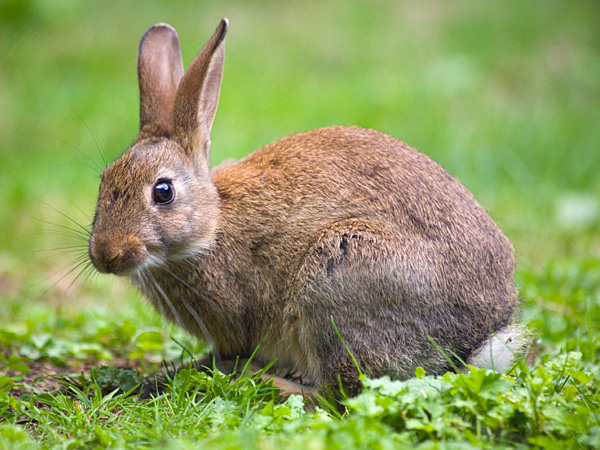
Lagomorphs have two families:
Leporidae (rabbits and hares)
and Ochotonidae (pikas). Lagomorphs
range in size from pikas,
which are six inches in length and
3.5 ounces in weight, to hares
which are almost twenty-eight
inches in length and 10 pounds in
weight. Most lagomorphs have
coats that are brownish or reddish
brown above and lighter brown to
white below. There are color differences
according to species, location,
and season. Lagomorphs are
well adapted to a herbivorous diet.
Rabbits and hares are not known to
store food, while pikas not only
store food but also dry or cure vegetation
for winter. Rabbits and pikas
burrow or inhabit abandoned burrows,
and hares shelter in natural
depressions.
Physical Characteristics of Rabbits, Hares, and
Pikas
Lagomorph incisor teeth are long and grow
throughout life. They are extremely effective for
severing plant stems and for gnawing on bark. Behind
the long incisors is a tiny peglike incisor.
There are no canine teeth. Cheek teeth, located
further back in the jaw, also grow throughout the
animal's life, wearing away as they grind abrasive
vegetation. The upper tooth rows are more widely
separated than the lower rows, and chewing is
done with a transverse movement. Vegetation
passes through the small intestine, which has a
spiral valve, providing greater surface area for digestion.
A large cecum is located at the point of
attachment of the large intestine, which contains
bacteria that aid in digestion. Lagomorphs
have the ability to produce two types of fecal material,
one that is wet and eaten again for further
nutrient absorption, and one that is dry and discarded.
The bones of the hind limb are fused where
they move against the calcaneuni, resulting in increased
leverage in locomotion.
Lagomorphs are digitigrade, with
five digits on the forefoot and five
on the hind foot.
Rabbits and hares have a rudimentary
tail, while pikas have none
at all. Folds of skin on the lips can
meet behind the incisors so that
gnawing can take place with the
mouth cavity closed. Other flaps of
skin are able to close the nostrils.
The skull is peculiarly fenestrated.
The ears are usually long. The testes
are located in front of the penis
rather than behind.
Rabbits and hares usually vocalize
only when frightened or injured.
Pikas express themselves with a
whistle or bark and a chattering call.
Lagomorphs can yield two or
more litters during each breeding
season, with two or three litters
common among hares and pikas
and three to six among rabbits. Litter
size ranges between two and
eight. Young rabbits are altricial
and are cared for in a nest. Hares are
born in the open and are precocial,
able to run soon after birth.
Destructive and Beneficial
Lagomorphs
Lagomorphs can be vectors for disease,
as well as pests to human agriculturists.
Rabbits eat flowers and
vegetables in spring and summer, causing problems
in flowerbeds, gardens, and fields. In the fall
and winter, they may damage and kill valuable
woody plants. Lagomorphs are the dietary staple
of many carnivorous mammals and birds, among
them wolves, foxes, bobcats, weasels, predatory
hawks, and owls. They are therefore an important
link in the food chain.
Rabbits, Hares, and Pikas Facts
Classification:
Kingdom: Animalia
Subkingdom: Deuterostomia
Phylum: Chordata
Subphylum: Vertebrata
Class: Mammalia
Subclass: Eutheria
Order: Lagomorpha
Family: Leporidae (hares and rabbits), Ochotonidae (pikas)
Genera: Bunolagus (bushman hares), Caprolagus (hispid hares),
Lepus (hares, twenty-one species), Oryctolagus (European rabbits),
Nesolagus (Sumatran hares), Pentalagus (amami rabbits),
Poelagus (Bunyoro rabbits), Pronolagus (red rock hares, three
species), Romerolagus (volcano rabbits), Sylvilagus (cottontails,
thirteen species); Ochontona (pikas, fourteen species)
Geographical location: All continents except Australia and Antarctica;
absent fromsouthern South America and most islands;
especially diverse in North America and Eurasia, the only continents
where pikas are found
Habitat: Range from tropical forest to arctic tundra
Gestational period: Rabbits, approximately twenty-eight days;
hares, up to forty-seven days; pikas, approximately thirty
days
Life span: In the wild, rarely more than nine months; up to fifteen
years in captivity
Special anatomy: Flaps of skin able to close the nostrils; peculiarly
fenestrated skull; long incisors that grow throughout
life; generally long hind feet, with the hind legs strong and positioned
for leaping; usually long ears; testes located in front of
the penis rather than behind; lagomorphs produce two types
of fecal material, one that is wet and eaten again for further nutrient
absorption and one that is dry and discarded
Other popular Animals
Photo Gallery of - Rabbits, Hares, and Pikas

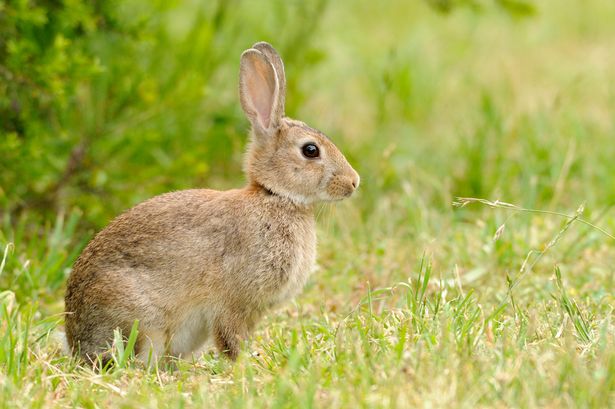

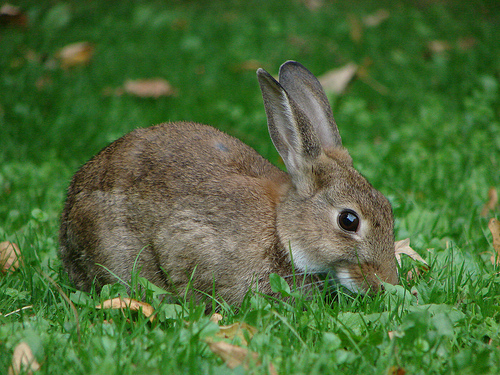

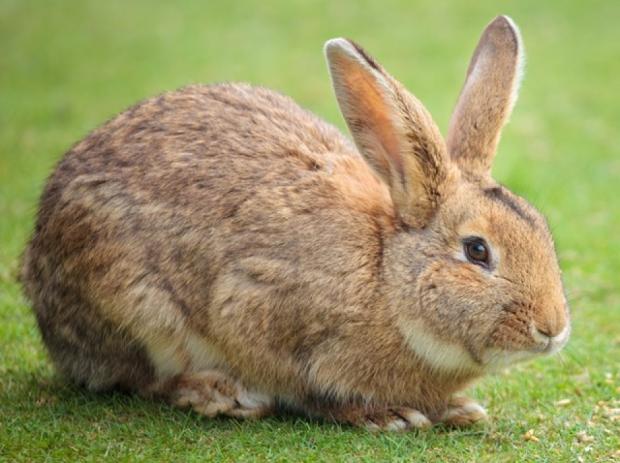
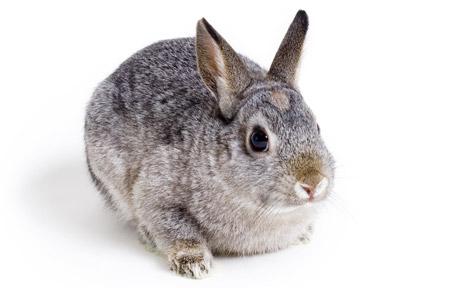

 Animalia Life
Animalia Life